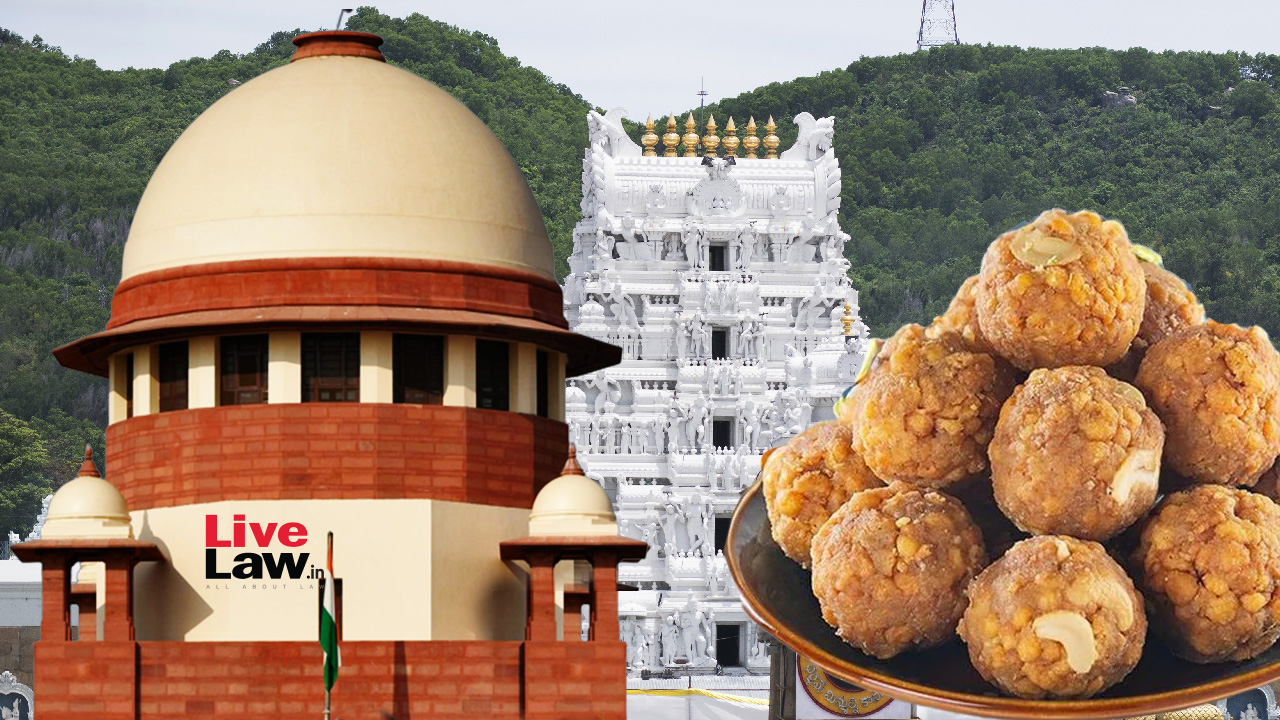 |
|
The Supreme Court of India on Monday, September 30, 2024, delivered a stern rebuke to Andhra Pradesh Chief Minister N Chandrababu Naidu for publicly alleging the use of adulterated ghee in the preparation of laddus offered as prasadam at the revered Tirumala Tirupati Temple. The Court, hearing a batch of petitions seeking a court-monitored investigation into the controversy, raised serious concerns about the propriety of the Chief Minister's actions, particularly given that the matter was under investigation. The bench, comprising Justices BR Gavai and KV Viswanathan, also observed that the lab report, which formed the basis of the Chief Minister's allegations, prima facie indicated that the tested samples were not the ghee actually used in the preparation of the laddus, but rather rejected samples.
The Court, questioning the timing and necessity of the Chief Minister's public statement, pointed out that the investigation was already underway, suggesting that such public pronouncements could potentially prejudice the investigation and impact the sentiments of millions of devotees worldwide. The bench's strong criticism highlighted the sensitivity of the issue, particularly given the religious significance of the Tirupati Temple and the reverence held for its prasadam. The Court's intervention underscores the need for responsible conduct from high-ranking officials, particularly in matters that deeply affect public sentiment and religious faith.
The hearing saw a heated exchange between the Court and representatives of the State Government and the Tirupati Tirumala Devasthanam (TTD), the governing body of the temple. Justice Viswanathan questioned the logic behind publicizing the lab report when the investigation was already ongoing, emphasizing that the report itself did not conclusively prove that the ghee used in the prasadam was adulterated. The Court repeatedly stressed the need for prudence and caution in matters concerning religious sentiments and reiterated its expectation that the Gods should be kept separate from political agendas. The Court's concerns were further fueled by the fact that the lab report contained disclaimers and indicated that the tested samples were rejected ghee, casting doubt on their relevance to the actual preparation of the prasadam. The bench, while acknowledging the need for an investigation, raised questions about the adequacy of the Special Investigation Team (SIT) constituted by the State and indicated its willingness to consider an independent agency for conducting the investigation.
Several petitions were filed before the court, including one by Dr. Subramanian Swamy, a senior BJP leader, who raised concerns about the potential impact of the Chief Minister's statements on the integrity of the investigation. Swamy argued that such categorical assertions without sufficient evidence could vitiate harmony and undermine the sanctity of the temple's offerings. He also questioned the accuracy and reliability of the lab report, highlighting the need for clarity on the source of the tested samples and the possibility of false positive results. The Court, recognizing the gravity of the allegations and the potential for political interference in the matter, emphasized the need for a thorough and impartial investigation, free from undue influence.
The controversy over the Tirupati laddus has sparked widespread debate, with allegations and counter-allegations flying between the ruling and opposition parties. While the former Chief Minister Jagan Mohan Reddy dismissed the allegations as 'diversion politics,' the Naidu-led Andhra Pradesh government has defended its actions, arguing that a thorough investigation is warranted. The Supreme Court's intervention underscores the delicate balance between public accountability, religious sentiment, and political maneuvering, highlighting the critical role of the judiciary in ensuring a fair and transparent investigation. The outcome of the court proceedings will have significant implications for the Tirupati Temple, its devotees, and the broader political landscape in Andhra Pradesh.
